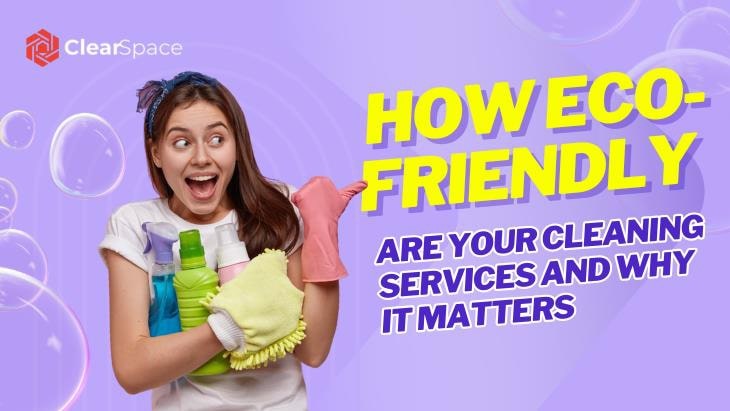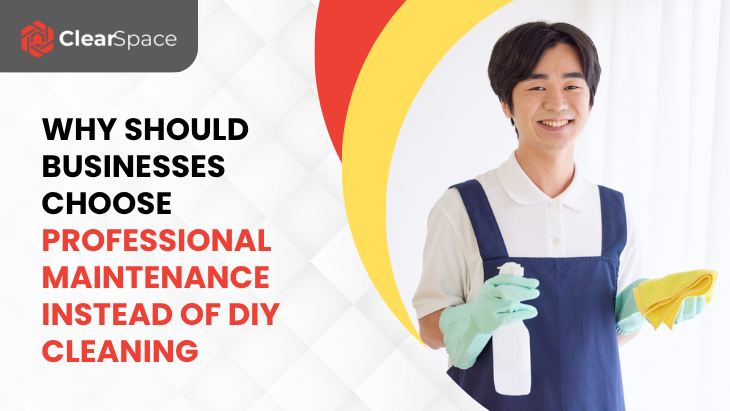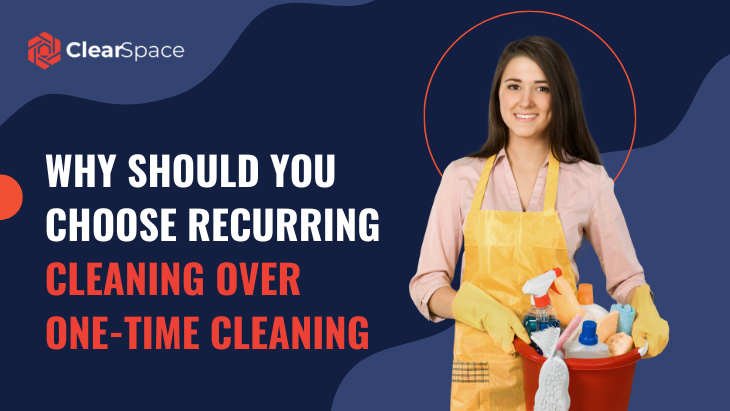Introduction
Over the last decade, the world has observed a paradigm shift regarding how people and institutions understand cleanliness and hygiene. Cleaning is no longer simply about attaining visual neatness or dirt removal—it is now a determination to preserve health, Cleaning & Device Repair Services protect the environment, and ensure sustainability. As worldwide concern about pollution, chemical contamination, and global warming increases, individuals and companies have begun to question the earth's price tag for their cleaning practices. They now question, how green are our cleaning products and services, and does it actually matter?
The short answer is that yes, it does matter significantly. Green cleaning is no longer a fad but a necessary element of responsible business practice and living. In a world where consumers want to buy from eco-friendly brands and governments are encouraging sustainability through policy, going green in cleaning is both a moral obligation and a savvy business move.
What Eco-Friendly Cleaning Really Means
Green cleaning, or eco-friendly cleaning, is the use of methods, materials, and products aimed at reducing harm to people and the planet. It means keeping away from harsh chemicals, cutting waste, saving water, and employing biodegradable or naturally produced cleaning products. But green cleaning is not merely a matter of swapping one for another—it's about changing an entire mindset that is centered on sustainability throughout the process.
A genuinely environment-friendly cleaning company takes into account packaging, effectiveness of equipment, recycling, energy use, and employee education. It strives to develop a system that makes all its activities benefit a cleaner world and a healthier environment for human habitation. With this strategy, cleanliness becomes possible without harming air quality, human well-being, and nature's equilibrium.
The Hidden Damage of Traditional Cleaning Methods
Traditional cleaning services, while successful at eliminating surface dirt and bacteria, frequently have embedded environmental ramifications. Most traditional cleaning agents contain aggressive chemical ingredients like chlorine bleach, ammonia, phosphates, and artificial scents. When these chemicals are flushed down the drain, they find their way into water bodies, thereby contaminating rivers, lakes, and oceans. These chemicals upset marine ecosystems and cause damage to sea life.
Moreover, most cleaning products emit volatile organic compounds (VOCs) that cause poor indoor air quality. After a long period of time, this will activate allergies, headaches, and respiratory issues. Too much use of plastic containers, disposable wipes, and non-recyclable items also contributes to the issue by producing trash that degrades within decades.
Therefore, whereas conventional cleaning produces short-term aesthetic effects, it tends to have long-term environmental and health effects that exceed its advantages.
Health Benefits of Eco-Friendly Cleaning
The effect on human health of cleaning products is most often overlooked. For those working with cleansers and janitorial crews who are exposed to these chemicals daily, the dangers are real. Repeated exposure to harsh chemicals can result in skin irritation, respiratory distress, and, in advanced stages, chronic disease. Even for inhabitants or workers in newly cleaned buildings, chemical residue can result in allergic reactions and lethargy.
Earth-friendly cleaning provides a cleaner, healthier option. By substituting irritating chemicals with plant-based, non-toxic products, green cleaning markedly diminishes contact with irritants. Additionally, eco-cleaners shun synthetic dyes, fragrances, and preservatives that cause asthma or skin sensitivities. Better indoor air quality translates into occupants breathing cleaner air, having fewer health issues, and feeling more comfortable.
This change also advantages cleansing personnel, providing them with a healthier environment where they are not subjected to constant exposure to dangerous fumes or corrosive chemicals.
The Economic Perspective: Cost vs. Long-Term Value
A common concern regarding green cleaning is expense. Many believe that green cleaners cost more than traditional ones. Although some eco-certified products may be higher in initial cost, they tend to be more concentrated and need to be used in smaller amounts per use. Over time, they tend to be cost-saving by minimizing waste, reducing maintenance, and prolonging the life of surfaces and furnishings.
In addition, companies that incorporate green cleaning measures tend to benefit financially through other means. Enhanced air quality leads to reduced sick leave among employees and increased productivity levels. LEED (Leadership in Energy and Environmental Design) or Green Seal certifications also increase the value and standing of a building. Companies known for being sustainable tend to have clients and tenants who are environmentally conscious, providing long-term returns.
Innovation and Technology in Contemporary Green Cleaning
Advances in technology have made green cleaning more convenient and effective than ever. Contemporary cleaning equipment currently has water-conserving systems, energy-efficient motors, and intelligent sensors that control detergent consumption. Microfiber cloths, for example, have transformed the business by cutting down on the use of aggressive chemicals while enhancing the accuracy of cleaning.
Also, UV-C disinfection solutions and robot cleaning machines are chemical-free sterilizing solutions for floors and surfaces. The technologies kill pathogens with light or automation, avoiding chemical wastage and man exposure.
Resource tracking management systems also assist cleaning businesses in tracking resource consumption, route optimization, and limiting carbon emissions from transportation. With technology, environmentally friendly cleaning is not only ecologically friendly but efficient operationally and scalable as well.
The Role of Certification and Transparency
While sustainability is a buzzword, some businesses pad their green credentials a phenomenon known as greenwashing. To separate genuine environmental stewardship from green hype, transparency and certification are needed.
Responsible certifications like EcoLogo, EPA Safer Choice, and Green Seal offer third-party assurance that cleaning products and services meet certain environmental and health standards. These certifications consider everything from chemical formulation to packaging and trash disposal.
For business and consumers, working with certified cleaning suppliers secures accountability and authenticity. Easy-to-read ingredient labels, clear labeling, and third-party certification establish trust and demonstrate that green cleaning claims are supported by real, quantifiable actions and not slogans.
Eco-Friendly Cleaning in Business and Society
For companies, embracing green cleaning services is not just an eco-friendly option but also a demonstration of their corporate values. Contemporary consumers and employees alike are more attracted to firms that illustrate real concern for the environment. A cleaned workplace with green products communicates respect for the environment as well as the individuals in it.
This positioning for sustainability reinforces corporate social responsibility (CSR) and builds reputation. In sectors such as hospitality, health, and education, where cleanliness directly influences customer attitude, green cleaning can be a major point of differentiation. Hotel guests, hospital patients, and parents in schools tend to feel more at ease knowing that the cleaning processes employed are safe and sustainable.
By selecting green cleaning, companies send a very clear message: that they not just concern themselves with profits but also with making a good, long-lasting impact on the world and society.
The Role of Government Policies and Public Awareness
Government policies and public initiatives are also increasingly encouraging green practices among industries. Prohibitions on the use of toxic chemicals, combined with rewards for sustainable operations, are transforming the way cleaning services operate. Most cities now promote green procurement by ensuring that public entities employ green-certified cleaning contractors.
Public awareness campaigns also have an influence on changing consumer expectations. As greater awareness about the health and environmental effects of traditional cleaning becomes widespread, consumers consciously look for eco-friendly products. The cleaning industry, accordingly, reacts to this trend by investing in research and formulating innovative green solutions.
This joint dynamic between policy, industry, and public awareness speeds up the transition to sustainable cleaning and makes green services more widely available to everyone.
Challenges Facing the Adoption of Green Cleaning Practices
Notwithstanding its increased popularity, instituting green cleaning practices has challenges. Some green products might not be as easily accessible or inexpensive in some locations. Shifting from conventional to eco-friendly operations involves investment in training, updating equipment, and supply chain reorganization.
A second challenge is sustaining performance. Green cleaning products are evolving quickly, but sometimes they are not quite able to match disinfecting capability in high-risk settings such as hospitals or laboratories. Effectiveness must be weighed against environmental safety through constant innovation and testing.
However, these obstacles are fleeting. As technology improves, prices fall, and consumer demand continues to grow, barriers to sustainable cleaning steadily decline. The solution is perseverance, education, and industry collaboration.
The Future of Cleaning: Sustainability as Standard
In the future, green cleaning will become the norm, not the norm. The increasing pressure of global warming, coupled with technology advancement and public awareness, assures that sustainability will be at the center of every sector—cleaning included.
We are on the cusp of a time when businesses are not just measured by the value of their products or services but also by the kind of footprint they leave on the environment. As artificial intelligence, automation, and green chemistry develop, cleaning services will be smarter, safer, and greener. In this new era, green cleaning will not be simply about causing less harm it will be about enhancing the planet's health.
Conclusion
The ClearSpace question "How eco-friendly are your cleaning services?" is not a silly one it represents the moral and environmental decisions that define our collective future. Green cleaning safeguards natural resources, encourages human well-being, and positions companies within international sustainability objectives. It decreases pollution, eliminates waste, and builds trust among consumers who care.
In the end, taking on green cleaning practices is about balance between cleanliness and wellness, between advancement and protection. For people, it's about living in healthier, cleaner environments. For organizations, it's leadership, innovation, and integrity. And for the planet, it's one less source of unnecessary destruction.
In 2025 and beyond, going green with cleaning is not only the good thing to do it is the intelligent, sustainable, and necessary way of the future for a cleaner, healthier world.





Leave a reply